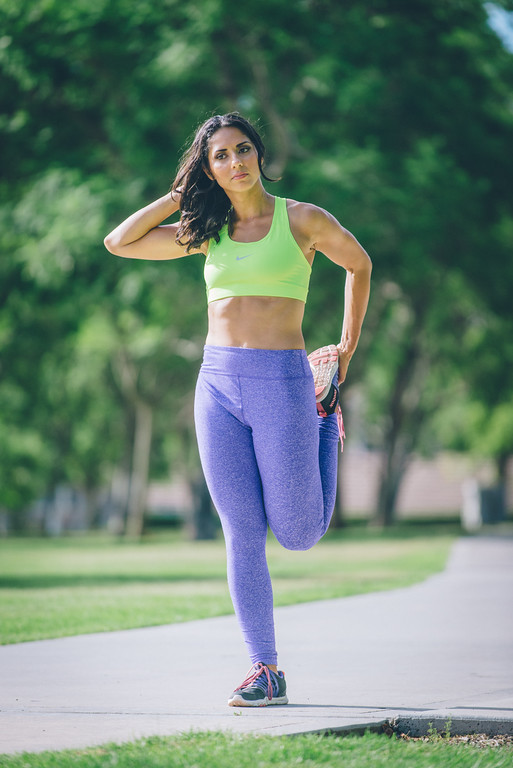Remember those Build-A-Bear workshops at the mall?
I used to hate walking past that store. It reflected all of my deepest fears: Annoying children, overbearing parents, and torn up pieces of toy bears scattered everywhere like a Pixar version of the movie Saw.
Despite my utter disdain for that little shop of horrors, the Build-A-Bear business model was on to something. Allowing a bunch of kiddos to run amok designing their ideal stuffed animal kept them engaged long enough for parents to quietly enjoy their $4 lattes and for untalented children to feel artsy for half an hour. Everyone benefited, including the head honcho over at Build-A-Bear who probably bought an island with her small retirement package of $1.3 million.
No big deal.
You might be wondering where I’m going with this and I’ma tell you…we’re going somewhere where no toy bears were harmed.
We can use the Build-A-Bear model for our workouts, or more specifically, our warm-ups. The purpose of the warm-up is to prep our bodies for the training ahead. This means getting all the joints, muscles and blood vessels juiced up for whatever the workout calls for. It’s such an important part of our training that it amazes me how most of us neglect it or half-ass it with jumping jacks and a stroll on the treadmill.
If we are to train and move optimally, then we must approach the warm-up with the same intention as we do the training itself. It’s easier said than done, of course. Warm-ups can feel boring and most trainers don’t offer much guidance other than ‘walk on the treadmill for 5 minutes.’
Enter…the Build-A-Warm-up model.
The first few minutes tells us how the rest of the workout will go, if we can add more to the bar or need to take it easy that day. It’s our time to address weaknesses that ultimately affect our form or lead to injury. It’s your prehab and rehab time, not just a time to catch up on your SnapChat stories.
The Most Important Questions To Guide Your Warm-Up
What time of day is it?
The most obvious question is often the most important one, which is why we start here.
The time of day typically dictates the duration of your warm-up and where you’ll spend most of your time. If it’s first thing in the morning, you’ll want to spend more time in the warm-up to get your joints and muscles primed for your session since you just woke up. If it’s right after work and you sit in a cubicle all day, your warm-up might include more hip mobility and glute activation exercises. No need to make this complicated. Just keep in mind that your body is at a different state during specific times of the day and answering this key question gives you a bit of direction on where to focus your warm-up time.
Where do I feel achy or tight?
This is an obvious questions but one I feel people tend to ignore. If there is any achiness or tightness in the body, take the extra minute or two to address it in your warm-up with a dynamic stretch, foam roller or lacrosse ball. Using the example above, if it’s right after work and you’ve sat down for 10-12 hours, your hips might feel tight. Do a few walking lunges, runner lunge stretches and hip release movements to open up the joint and see how it feels. Is there some relief or are you still tight? What else could you do to ensure you’re moving optimally?
What’s my primary movement/lift/training focus today?
This is the single most important question, which is why a simple “go do a few jumping jacks” is not a proper warm-up for anyone.
Every strength training day has a focus (if you don’t then that’s another conversation), be it a body part or specific lift. You want to tailor that warm-up to that main lift or body part focus. Here’s a brief example:
Leg day focus
Warm-up strategy: Prep ankle and hip joints for optimal mobility. Fire up the glutes, legs and core stabilizers
Movements / exercise selection:
Foam roll quads, inner thighs, glutes
Lateral walks with a light resistance band, goblet squats, ankle mobilization, anterior core and glute activation movements
Bench press focus
Warm-up strategy: Spinal/thoracic mobility, shoulder stabilization, core stability, lats and serrates anterior activation
Movements / exercise selection:
Forearm wallslides, side lying windmills, yoga push-ups, kettlebell arm bar
There are an endless amount of exercises or movements to choose from. The above is just a sample, and depending on your specific needs (as well as the answer to the questions above) you might want to spend a bit more time on your warm-up to prep for the task at hand.
What are my top weaknesses?
The answer to this question is a lot easier to answer with the help of another coach or training professional, especially if you’re unsure of what the difference is between mobility and stability (I wrote a post about that HERE).
Assuming you’re well aware of where your weaknesses are, be it a mobility, stability or strength issue, you can add certain movements or drills that will help address that issue. For example, I’m well aware that my shoulder girdle is a weak spot for me, as well as firing up my gluteus medius. As such, my warm-up usually includes some form of shoulder stabilization and mobilization drills and if there’s a squat or deadlift focus, I’ll likely include exercises to fire up my glutes. It’s as simple as that. However if you’re unsure of where your weaknesses are, ask a coach to give you a quick movement assessment. If you already know what it is, it doesn’t hurt to have a screening every few months as things change over time and new things can crop up at different points in your training career.
What’s your favorite warm-up drill?


